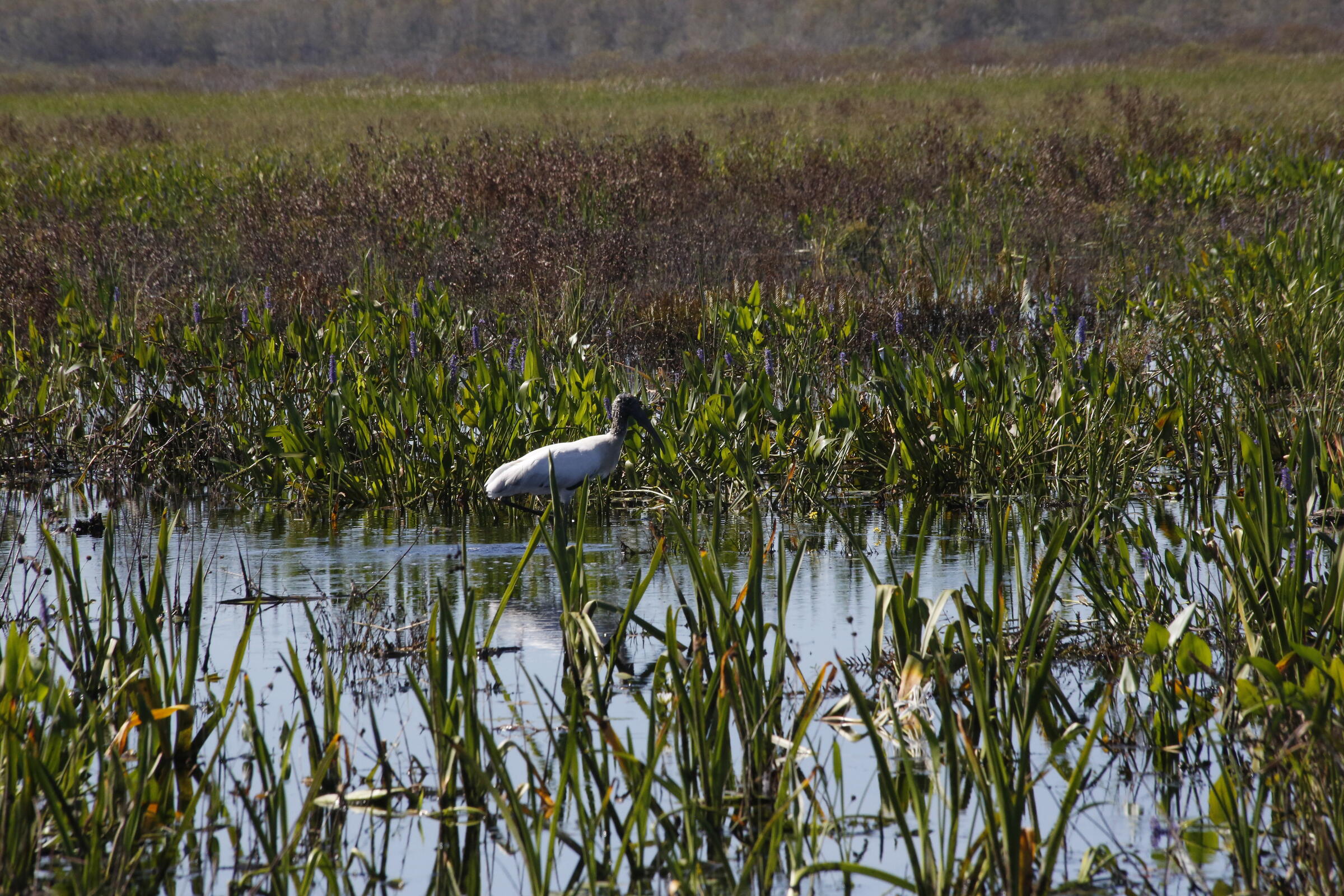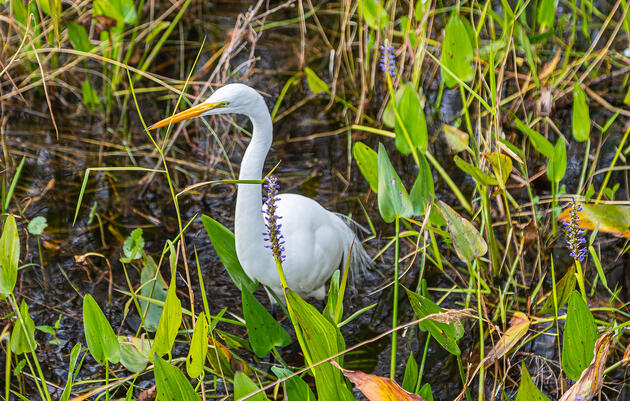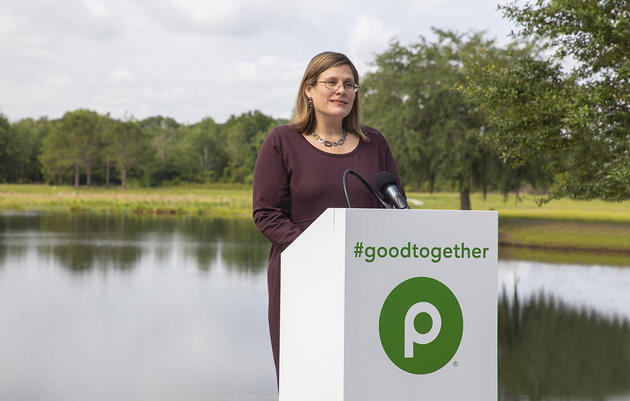Audubon has an ambitious goal to restore 1,000 acres of marsh and wet prairie habitat at Corkscrew Swamp Sanctuary by 2023, and we’re already seeing extraordinary results from our efforts.
The mosaic of upland and wetlands habitats found in the Sanctuary was once common throughout Southwest Florida, but has been lost to development in many places since the 1950s. What remains, in places like Corkscrew Swamp Sanctuary, is further threatened by degradation, resulting from ditching and draining of the larger watershed.
One mechanism of wetland decline at Corkscrew Swamp Sanctuary has been the invasion of opportunistic native woody shrubs and trees like Carolina willow that have taken advantage of drier conditions. In turn, these willow thickets are resistant to prescribed fire, which can accelerate the conversion of the marsh. The resulting habitat loss is harmful to everything from plant diversity to foraging Wood Storks.
Sanctuary staff are hard at work transforming these shrub-dominated landscapes back into highly productive and biologically diverse wetlands. The three-step restoration process includes mechanical shredding of woody shrubs and trees; follow-up treatments with herbicide to encourage the re-establishment of desirable species; and finally, prescribed fire. Drone imagery is improving accuracy as we measure the project’s progress and provides a more comprehensive view of the results. We anticipate that this initiative will serve as a model for other land management programs across Florida, including areas with similar infestations in the Corkscrew Regional Ecosystem Watershed (CREW).
This year mulching took place over the months of May and June. Restoration from July 2021 through June 2022 included:
Phase 1: Mechanical removal of 252 acres in four units.
Phase 2: Herbicide treatment over 900 acres including 693 acres retreatment of past units;
Phase 3: Prescribed fire applied to 20 restoration acres, plus 333 acres ready for prescribed fire when permittable.
In addition to improving wildlife habitat, restoring these wetlands will reduce wetland water loss and the risk of catastrophic wildfire, providing tremendous benefit to local communities. Because wetlands sequester nutrients that can degrade water quality and provide natural water storage to reduce flooding, the project is a real step to recharge the natural systems fundamental to water quality in Southwest Florida. We look forward to managing Corkscrew Swamp Sanctuary so that our wetlands continue to meet the needs of wildlife and residents while providing a recreational and spirit-nurturing resource for our 100,000 visitors each year.
This story is based on an excerpt from the 2022 Spring State of the Everglades.









